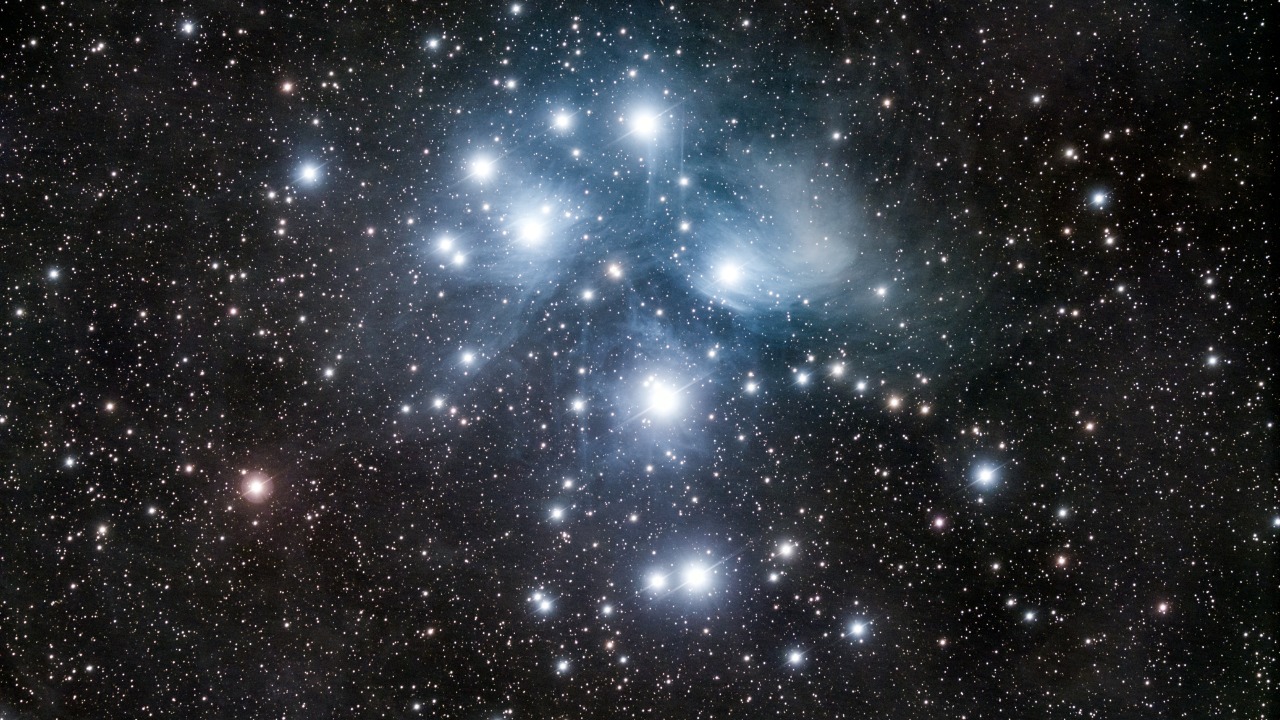
Recent astronomical observations have unveiled a startling revelation about the Pleiades star cluster, also known as the Seven Sisters. This cluster, once thought to be confined within a relatively small region of space, could actually extend 20 times farther than previously estimated. This discovery, announced on November 12, 2025, not only challenges our understanding of the cluster’s boundaries but also underscores the limitations of earlier detection methods. By identifying these previously hidden members, astronomers are gaining fresh insights into the formation and evolution of the Pleiades cluster.
What is the Pleiades Star Cluster?
The Pleiades, or the Seven Sisters, is an open star cluster located in the constellation Taurus. Visible to the naked eye, this cluster has been recognized and named in various mythologies around the world. Traditionally, the Pleiades was estimated to be around 100 million years old, with its core containing about 1,000 stars within an area thought to span roughly 13 light-years. This cluster’s fame extends beyond its visibility, as it holds a significant place in astronomical studies and cultural lore alike. More details on its fame can be found here.
The Traditional Boundaries of the Seven Sisters
Historically, observations of the Pleiades focused primarily on the bright, central stars visible through telescopes. This focus led to an underestimation of the cluster’s full extent. Earlier studies, some dating back decades, confined the Pleiades to a diameter of about 13 light-years. These studies missed fainter, more distant members due to observational biases. This source provides a historical perspective on the cluster’s perceived size.
New Observations Expanding the Cluster’s Size
With the advent of advanced telescopes, astronomers have detected the Pleiades extending up to 20 times larger than previously thought, potentially spanning hundreds of light-years. This discovery has led to the identification of thousands of long-lost stellar siblings, including low-mass stars and brown dwarfs that were previously overlooked. Recent data confirms this 20 times larger measurement.
Telescopes and Techniques Behind the Discovery
The use of infrared and wide-field telescopes has been instrumental in revealing the faint, distant members of the Pleiades that optical surveys missed. Data from multiple observatories, processed on November 12, 2025, confirmed the presence of thousands of stellar ‘siblings’ through proper motion and parallax analysis. Specifics on the telescopes revealing these siblings can be found here.
Implications for Stellar Formation in the Pleiades
The expanded size of the Pleiades suggests that the cluster formed from a larger initial molecular cloud. Gravitational ties have preserved distant members over 100 million years, indicating a more diverse population than previously modeled. The discovery of thousands of additional low-mass stars and brown dwarfs further supports this diversity. More on the hidden thousands of stellar siblings can be found here.
Challenges and Future Research Directions
Confirming cluster membership for such distant, faint objects presents significant challenges, including potential contamination from unrelated stars in the galactic plane. However, astronomers are planning follow-up observations to map the full extent and dynamics of this 20 times larger Pleiades structure. These ongoing verification efforts, announced on November 12, 2025, underscore the importance of this discovery and its potential to reshape our understanding of the Pleiades cluster.
More from MorningOverview